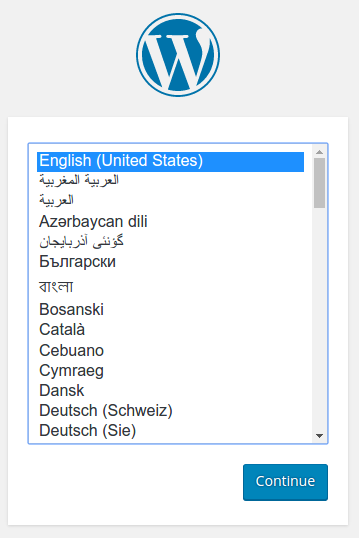8.6 KiB
| title | assignees | |
|---|---|---|
| Example: Deploying WordPress and MySQL with Persistent Volumes |
|
{% capture overview %} This tutorial shows you how to deploy a WordPress site and a MySQL database using Minikube. Both applications use PersistentVolumes and PersistentVolumeClaims to store data.
A PersistentVolume (PV) is a piece of storage in the cluster that has been provisioned by an administrator, and a PersistentVolumeClaim (PVC) is a set amount of storage in a PV. PersistentVolumes and PersistentVolumeClaims are independent from Pod lifecycles and preserve data through restarting, rescheduling, and even deleting Pods.
Warning: This deployment is not suitable for production use cases, as it uses single instance WordPress and MySQL Pods. Consider using WordPress Helm Chart to deploy WordPress in production. {: .warning}
Note: The files provided in this tutorial are using beta Deployment APIs and are specific to kubernetes version 1.8. If you wish to use this tutorial with an earlier version of Kubernetes, please update the beta API appropriately, or reference earlier versions of this tutorial. {: .note}
{% endcapture %}
{% capture objectives %}
- Create a PersistentVolume
- Create a Secret
- Deploy MySQL
- Deploy WordPress
- Clean up
{% endcapture %}
{% capture prerequisites %}
{% include task-tutorial-prereqs.md %}
Download the following configuration files:
{% endcapture %}
{% capture lessoncontent %}
Create a PersistentVolume
MySQL and Wordpress each use a PersistentVolume to store data. While Kubernetes supports many different types of PersistentVolumes, this tutorial covers hostPath.
Note: If you have a Kubernetes cluster running on Google Container Engine, please follow this guide. {: .note}
Setting up a hostPath Volume
A hostPath mounts a file or directory from the host node’s filesystem into your Pod.
Warning: Only use hostPath for developing and testing. With hostPath, your data lives on the node the Pod is scheduled onto and does not move between nodes. If a Pod dies and gets scheduled to another node in the cluster, the data is lost.
{: .warning}
-
Launch a terminal window in the directory you downloaded the manifest files.
-
Create two PersistentVolumes from the
local-volumes.yamlfile:kubectl create -f local-volumes.yaml
{% include code.html language="yaml" file="mysql-wordpress-persistent-volume/local-volumes.yaml" ghlink="/docs/tutorials/stateful-application/mysql-wordpress-persistent-volume/local-volumes.yaml" %}
{:start="3"} 3. Run the following command to verify that two 20GiB PersistentVolumes are available:
kubectl get pv
The response should be like this:
NAME CAPACITY ACCESSMODES RECLAIMPOLICY STATUS CLAIM STORAGECLASS REASON AGE
local-pv-1 20Gi RWO Retain Available 1m
local-pv-2 20Gi RWO Retain Available 1m
Create a Secret for MySQL Password
A Secret is an object that stores a piece of sensitive data like a password or key. The manifest files are already configured to use a Secret, but you have to create your own Secret.
-
Create the Secret object from the following command:
kubectl create secret generic mysql-pass --from-literal=password=YOUR_PASSWORDNote: Replace
YOUR_PASSWORDwith the password you want to apply.
{: .note} -
Verify that the Secret exists by running the following command:
kubectl get secretsThe response should be like this:
NAME TYPE DATA AGE mysql-pass Opaque 1 42sNote: To protect the Secret from exposure, neither
getnordescribeshow its contents. {: .note}
Deploy MySQL
The following manifest describes a single-instance MySQL Deployment. The MySQL container mounts the PersistentVolume at /var/lib/mysql. The MYSQL_ROOT_PASSWORD environment variable sets the database password from the Secret.
{% include code.html language="yaml" file="mysql-wordpress-persistent-volume/mysql-deployment.yaml" ghlink="/docs/tutorials/stateful-application/mysql-wordpress-persistent-volume/mysql-deployment.yaml" %}
-
Deploy MySQL from the
mysql-deployment.yamlfile:kubectl create -f mysql-deployment.yaml -
Verify that the Pod is running by running the following command:
kubectl get podsNote: It can take up to a few minutes for the Pod's Status to be
RUNNING. {: .note}The response should be like this:
NAME READY STATUS RESTARTS AGE wordpress-mysql-1894417608-x5dzt 1/1 Running 0 40s
Deploy WordPress
The following manifest describes a single-instance WordPress Deployment and Service. It uses many of the same features like a PVC for persistent storage and a Secret for the password. But it also uses a different setting: type: NodePort. This setting exposes WordPress to traffic from outside of the cluster.
{% include code.html language="yaml" file="mysql-wordpress-persistent-volume/wordpress-deployment.yaml" ghlink="/docs/tutorials/stateful-application/mysql-wordpress-persistent-volume/wordpress-deployment.yaml" %}
-
Create a WordPress Service and Deployment from the
wordpress-deployment.yamlfile:kubectl create -f wordpress-deployment.yaml -
Verify that the Service is running by running the following command:
kubectl get services wordpressThe response should be like this:
NAME CLUSTER-IP EXTERNAL-IP PORT(S) AGE wordpress 10.0.0.89 <pending> 80:32406/TCP 4mNote: Minikube can only expose Services through
NodePort.
TheEXTERNAL-IPis always<pending>. {: .note} -
Run the following command to get the IP Address for the WordPress Service:
minikube service wordpress --urlThe response should be like this:
http://1.2.3.4:32406 -
Copy the IP address, and load the page in your browser to view your site.
You should see the WordPress set up page similar to the following screenshot.
Warning: Do not leave your WordPress installation on this page. If another user finds it, they can set up a website on your instance and use it to serve malicious content.
Either install WordPress by creating a username and password or delete your instance. {: .warning}
{% endcapture %}
{% capture cleanup %}
-
Run the following command to delete your Secret:
kubectl delete secret mysql-pass -
Run the following commands to delete all Deployments and Services:
kubectl delete deployment -l app=wordpress kubectl delete service -l app=wordpress -
Run the following commands to delete the PersistentVolumeClaims and the PersistentVolumes:
kubectl delete pvc -l app=wordpress kubectl delete pv local-pv-1 local-pv-2Note: Any other Type of PersistentVolume would allow you to recreate the Deployments and Services at this point without losing data, but
hostPathloses the data as soon as the Pod stops running. {: .note}
{% endcapture %}
{% capture whatsnext %}
- Learn more about Introspection and Debugging
- Learn more about Jobs
- Learn more about Port Forwarding
- Learn how to Get a Shell to a Container
{% endcapture %}
{% include templates/tutorial.md %}
